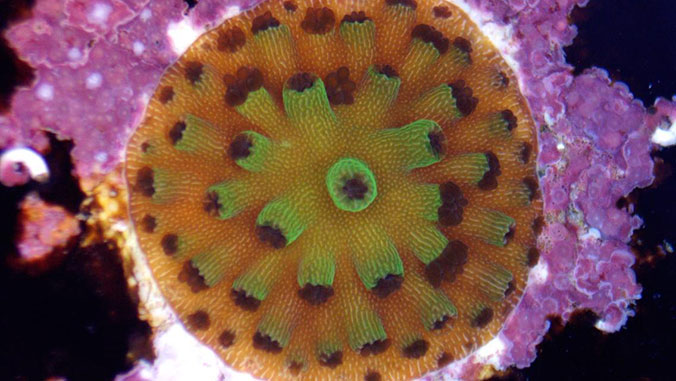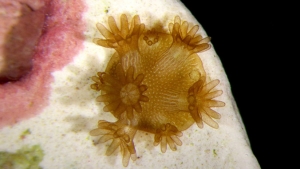
Flash-frozen sperm collected from corals in Florida and Puerto Rico was used to fertilize coral eggs from hundreds of miles away in Curaçao. The juvenile corals raised from this trans-Caribbean coupling demonstrate the reproductive compatibility of coral colonies that would otherwise be too far apart to produce offspring in the wild and they represent the largest wildlife population ever raised from cryopreserved material.
A paper describing this study, by an international team of researchers, including Mary Hagedorn at the University of Hawaiʻi at Mānoa School of Ocean and Earth Science and Technology (SOEST), was published in the Proceedings of the National Academy of Sciences.
The technique could be used as a conservation tool by introducing genetic variation into endangered corals and potentially accelerating their adaptation to climate change.
"Most corals only attempt sexual reproduction once a year and the eggs and sperm are only viable for a short time period," said Hagedorn, a research biologist at the Smithsonian Conservation Biology Institute and UH Mānoa's Hawaiʻi Institute of Marine Biology. She is the lead author of this study, and has developed the technique to cryopreserve coral sperm in her laboratory at UH. "Cryopreservation allows us to breed corals with parentage from hundreds of miles apart."
Assisted gene flow

"Corals are a vital foundation species for reef ecosystems," said Iliana Baums, professor of biology at Penn State and one of the leaders of the research team. "Reefs provide habitat for astonishing species diversity, protect shorelines and are economically important for fisheries, but they are suffering in many places due to warming ocean waters. Without intervention, we will continue to lose corals to climate change with potentially disastrous consequences."
Genetic diversity is the fuel for species adaptation. One of the main sources of genetic diversity is sexual reproduction—new combinations of genes are created when a sperm fertilizes an egg. However, sexual reproduction by Caribbean corals in the wild is now vanishingly rare. Worse yet, because corals are sessile creatures (fixed in one place), they have a limited ability to gain new genetic diversity through gene flow, the evolutionary force that increases genetic diversity when distant populations come together, each bringing with them their own unique versions of genes.
"To increase genetic diversity in corals, we can use 'assisted gene flow' by bringing corals together that are physically distant in the wild, but this is logistically incredibly difficult," said Baums.
Cryopreservation
Most corals reproduce by broadcasting bundles of eggs and sperm into the sea water in a spectacular spawning event timed with the full moon. The researchers collected these bundles from corals in Florida and Puerto Rico, separated the eggs and sperm, and then quickly froze the sperm cells using a liquid nitrogen cryopreservation technique.
"Because these corals only produce eggs and sperm once per year, frozen sperm collected in Florida and Puerto Rico needed to be cryopreserved in advance and stored for over a year until it could be used for a spawning event in Curaçao," said Baums.
Some of the sperm were kept frozen at the USDA National Animal Germplasm Program's gene bank for up to 10 years. The frozen sperm was transported to Curaçao where it was thawed and used to fertilize fresh eggs collected locally. The fertilized eggs developed into larvae that were then transported to Mote Marine Laboratory and The Florida Aquarium in Florida, where they were allowed to develop into adults.
This research is an example of UH Mānoa's goals of Excellence in Research: Advancing the Research and Creative Work Enterprise (PDF), and Building a Sustainable and Resilient Campus Environment: Within the Global Sustainability and Climate Resilience Movement (PDF), two of four goals identified in the 2015–25 Strategic Plan (PDF), updated in December 2020.






